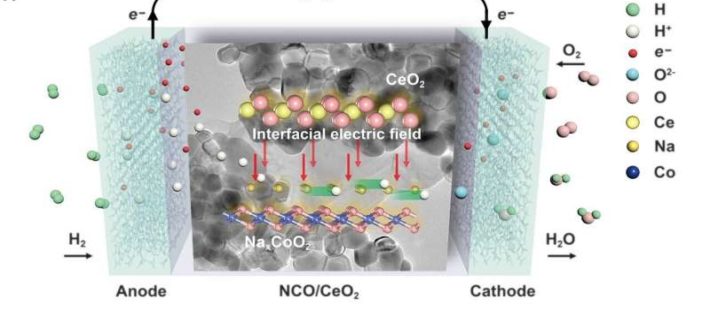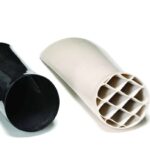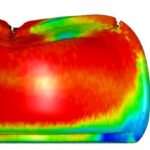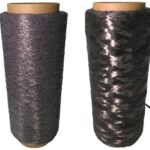A team of researchers affiliated with several institutions in China has developed a way to reduce the operating temperature of ceramic fuel cells by using a high proton conductivity electrolyte. In their paper published in the journal Science, the group describes their electrolyte and how well it worked when tested in a hydrogen fuel cell. Meng Ni and Zongping Shao, with Hong Kong Polytechnic University and Nanjing Tech University, respectively, have published a Perspective piece in the same journal issue outlining the need for cooler-running ceramic fuel cells and further explaining the work done by the team in China.
Why do we need to reduce the operating temperatures of ceramic fuel cells?
A fuel cell is a device that produces electricity from chemical reactions. A proton ceramic fuel cell is based on ceramic electrolyte materials that exhibit high protonic conductivity at high temperatures, typically 800° to 1000°C. Ni and Shao note that reducing the operating temperatures of ceramic fuel cells is an objective of engineers to improve their durability and efficiency, and also make production costs less expensive. They also affirm that there are two options currently available for doing so: making the electrolyte thinner to lower resistance or developing a new electrolyte altogether. Prior efforts to reduce the thickness of the electrolyte have been stymied by difficulties in mass producing them and associated high production costs.
The new research could solve the problem
In this new effort, the researchers have chosen the second option and developed a new electrolyte that consists of a NaxCoO2-CeO2 composite. Testing showed the electrolyte had a conductivity of 0.1 to 0.3 S cm–1 when heated to between 370° to 520°C. To test the electrolyte, the researchers used it to construct a hydrogen fuel cell and found it capable of delivering 1 watt more fully per centimetre. They also noted that the device could operate as an electrolyser to produce hydrogen by running it in reverse.
Ni and Shao suggest that the work done by the team in China is important because it shows that different types of electrolytes can be used to reduce the operating temperature of ceramic fuel cells, though they also acknowledge that more work is required to determine if the new approach can be commercialized.
Featured image: Design of the NCO/CeO2 heterostructure functionalities for fast proton migration. Credit: Science (2020). DOI: 10.1126/science.aaz9139
Source: Phys.org










